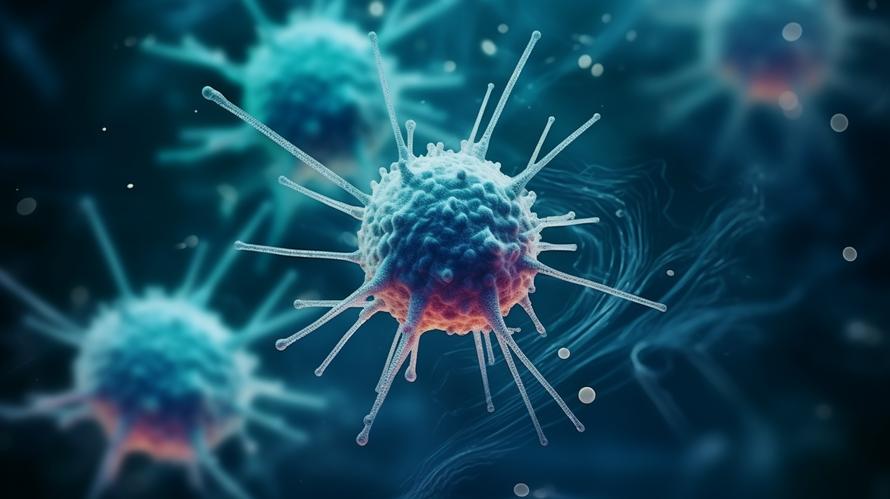In the lush green canopy of the Amazon rainforest, there thrives a modest-looking plant called Blushwood (Hylandia dockrillii), which has begun to rewrite the story of cancer therapy. Deep within its fleshy berry, scientists have uncovered a remarkable compound, EBC-46, which has shown the uncanny ability to induce rapid cancer cell death in lab tests. Native animals often seek the berry for its healing potency, instinctively tapping into a hidden reserve of nature’s medicine. This remarkable instance of flora offering hope in the face of one of humanity’s most daunting diseases is a testament to the power of nature’s laws.
But Blushwood is just one chapter in the vast narrative nature provides in our battle with cancer. For years, scientists have been turning over leaves, quite literally, in search of compounds that obey the fundamental laws of nature—biocompatibility, target-specificity, and minimal side-effects—ushering in a new era of cancer science that is both innovative and grounded in ancient wisdom.
Cancer, a malady as old as life itself, is characterized by the uncontrolled growth of cells. For centuries, we have waged war against this insidious enemy, armed with treatments that are often as harsh on the body as they are on the disease. Yet, by observing and harnessing the laws that govern life and growth in the natural world, we may have begun to turn the tide against cancer’s relentless onslaught.
Phytochemicals, those bioactive compounds found in plants, have become the focus of intense research due to their diverse and potent biological activities. Take, for example, the Pacific Yew tree’s bark, which gave rise to Paclitaxel—a powerful chemotherapeutic agent that stabilizes microtubules and hence prevents cancer cell division and growth. Similarly, the discovery of Camptotheca acuminata in China led to the development of Topotecan and Irinotecan, drugs that inhibit DNA replication within cancer cells.
Marine ecosystems too have proven to be a reservoir for anticancer compounds. The sea, covering over 70% of the planet, holds mysteries and medicinal properties in its depths that are only now being comprehensively explored. Cytarabine and Trabectedin are drugs derived from ocean-sourced organisms that employ unique mechanisms to confront the proliferation of cancer cells, once again demonstrating nature’s proficiency in design.
Moreover, the circadian rhythm, nature’s 24-hour cycle governing biological processes in plants and animals, has profound implications for cancer treatment. Synchronizing treatment with the body’s internal clock can enhance drug efficacy and reduce side effects, a principle known as chronotherapy. This natural law, reflecting the cycle of day and night, is being leveraged to time the administration of treatments at the most opportune moments, aligning medical interventions with the body’s inherent rhythms.
In terms of advice, while these medical advancements are ripe with promise, individuals can take proactive steps to embrace nature’s laws in their daily lives for cancer prevention and general health. Consider diet, a realm over which we have considerable control, and one that holds significant sway over our well-being. A plant-based diet replete with cancer-fighting phytonutrients is not just a dietary choice; it’s a strategy fortified by epidemiological evidence linking plant consumption with reduced cancer risk.
Cruciferous vegetables, such as broccoli, Brussels sprouts, and kale, contain glucosinolates which can break down into compounds showing anti-cancer properties. Consumption of whole grains, legumes, nuts, and seeds deliver fiber, vitamins, minerals, and phytochemicals that collectively contribute to cancer defense. Fruits rich in antioxidants, such as berries, provide compounds that neutralize free radicals, preventing the kind of cellular damage that can lead to cancer.
Embracing an active lifestyle also aligns with nature’s intent. Regular physical exercise reinforces the body’s defenses, not only strengthening immune response but also minimizing inflammation, a known compatriot in cancer proliferation.
Meanwhile, the stress relief gained from mindfulness, yoga or time spent in green spaces is not mere relaxation; it is an act of re-synchronizing our bodies with nature’s rhythms, reducing stress-induced inflammation and hormonal imbalances that contribute to cancer’s genesis.
The story of modern oncology is maturing into one of coexistence with nature rather than dominance over it. As sophisticated as our methods become, they are reflections of the intricate dance penned in the genetic codes of every earthly organism, hegemonies that have confronted illness and adversity over countless generations.
Living in harmony with these laws—through thoughtful stewardship of our environment, responsible consumption, and lifestyle choices—we not only foster our health but also perpetuate the exquisite balance nature has established. This same balance presents us with a compendium of cures awaiting discovery, a reminder that the laws nature has crafted are both a protectorate and a library written in the language of life itself.
For those who are contending with cancer or those mindful of prevention, the message is clear: respecting and harnessing the laws of nature is not arcane wisdom but cutting-edge science. It is a clarion call to blend the wealth of ancestral knowledge with the precision of modern investigation, uncovering treatments that are as merciful to the human body as they are merciless to cancer.
In conclusion, while nature harbors curative secrets that scientists are still decoding, the fundamental laws she employs are elegantly simple, yet profoundly effective. As we continue to explore, discover, and synthesize, bridging the chasm between natural law and human ailment, we might well find that the most advanced cancer therapy is not a departure from nature, but rather an ode to its genius.



